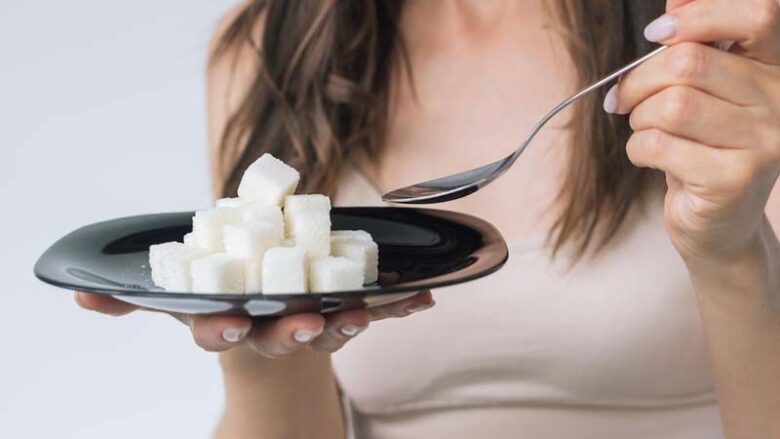Sugar cravings can be strong, but too much sugar can hurt your health, energy, and well-being. Cutting down sugar doesn’t mean giving up delicious food or drinks. There are practical and effective ways to reduce sugar intake while still enjoying meals and beverages bursting with flavor. This article explores how you can make these changes seamlessly and feel positive about what’s on your plate.
Understanding Sugar’s Impact
Sugar, especially added sugar, contributes to many health issues ranging from weight gain to diabetes and even heart disease. It’s also addictive, encouraging cravings and spikes in energy followed by crashes. Excess sugar consumption can dull your taste buds over time, prompting a reliance on sweeter tastes. Reducing sugar intake can help you regain sensitivity to natural sweetness and promote sustained energy levels throughout the day.
Embrace Natural Sweeteners
Natural sweeteners, such as honey, maple syrup, and coconut sugar, are excellent alternatives to refined sugars. These unprocessed options contain more nutrients and a richer depth of flavor. Another option is stevia or monk fruit extract, which satisfy your sweet tooth without affecting your blood sugar levels. For instance, drizzle a small amount of honey on your oatmeal, or add a sprinkle of cinnamon for sweetness without piling on extra sugar.
Spice It Up
Flavor doesn’t have to rely on sugar. Spices like cinnamon, nutmeg, cardamom, and vanilla add warmth and depth to dishes. For example, a pinch of cinnamon in your coffee or yogurt can replace the need for sugar or syrups while enhancing the natural flavors of these foods. Similarly, vanilla extract in baked goods gives a sweet fragrance that compensates for reduced sugar. These small additions pack your meals and snacks with bold flavors that will keep your taste buds satisfied.
Read Labels Carefully
Many foods marketed as “healthy” or “low fat” often hide significant amounts of added sugar. Items like granola, flavored yogurts, salad dressings, and sauces can be some of the biggest culprits. Familiarize yourself with nutrition labels, and look out for terms like “high-fructose corn syrup,” “cane sugar,” and “dextrose.” Once you know what to avoid, swap high-sugar products for whole foods or make your own versions at home to control the sugar content.
Mindful Meal Planning
Planning meals ahead of time allows you to actively reduce your reliance on sugary convenience foods. Focus on balanced meals that include healthy fats, proteins, and fiber, which give your body the energy it needs to function effectively. When you prep snacks or desserts, use nutrient-rich ingredients like fruits, nuts, and oats to provide natural sweetness and fuel. Planning mindfully not only prevents sugar intake but also enables you to provide your body with wholesome and satisfying options.
Hydration Is Key
Sometimes sugar cravings are your body’s way of telling you it’s dehydrated. Drinking enough water can reduce the urge to consume sugary snacks. Infusing your water with slices of fruits like lemon, orange, or berries adds subtle sweetness without added sugar. Additionally, replacing sodas and other sugary drinks with naturally flavored sparkling water or herbal teas can help you lower your sugar intake while staying hydrated and refreshed.
The Art of Gradual Reduction
Reducing sugar abruptly can be daunting, and it might not be a sustainable change for everyone. Instead, take gradual steps to reduce your sugar intake. Start with small changes, like cutting the amount of sugar in your coffee by half or switching to unsweetened versions of foods you already enjoy. Over time, your palate will begin to adjust, and you’ll find yourself enjoying the natural flavors of food without the need for extra sweetness.
Healthy Fats Are Your Friend
Healthy fats such as avocados, nuts, seeds, and olive oil can help curb sugar cravings as they provide a sense of fullness and stabilizing energy. Incorporating these fats into your meals not only helps reduce sugar but also ensures a balanced diet. For instance, a snack of almond butter on celery sticks or a handful of walnuts can work wonders when faced with sugar cravings. These fats keep your blood sugar levels stable, helping to reduce those midday sugar slumps.
Savor Your Progress
Adopting a low-sugar lifestyle doesn’t have to mean deprivation. By making conscious adjustments and exploring how natural ingredients enhance flavor, you’ll unlock a world of possibilities for satisfying your cravings in a healthier way. Take pride in the progress you’re making toward better health, and don’t hesitate to experiment with your favorite recipes to find creative, sugar-free ways to make them delicious.
FAQs
1. Are artificial sweeteners a beneficial substitute for sugar?
While artificial sweeteners like aspartame or sucralose don’t contain calories, they can sometimes have an unsatisfying aftertaste. Natural alternatives like stevia or monk fruit often provide a more appealing option for reducing sugar.
2. How much added sugar is considered acceptable?
The American Heart Association recommends limiting added sugar to no more than 6 teaspoons (25 grams) per day for women and 9 teaspoons (36 grams) per day for men.
3. What fruits are best for reducing sugar cravings?
Fruits like berries, apples, and pears provide natural sweetness and are high in fiber, making them ideal choices for curbing sugar cravings without added sugar.
4. Can I still eat dessert while reducing sugar intake?
Absolutely! Opt for treats made from whole ingredients with natural sweeteners, such as banana-based muffins or dark chocolate with minimal added sugar.




